 |
The Ganders Family History
Stanton Ganders
1912-1990
Farmer / B-24
Bomber Crew Chief / State Senator /
Congressional Candidate / USDA
Administrator /
Agricultural Lobbyist
NEW Update of Stanton's WWII B-24 service
Updated June 19, 2022

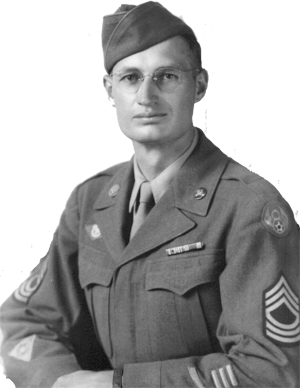 |
|
|
The Stanton Ganders
State Senate Campaigns - 1948-58 |
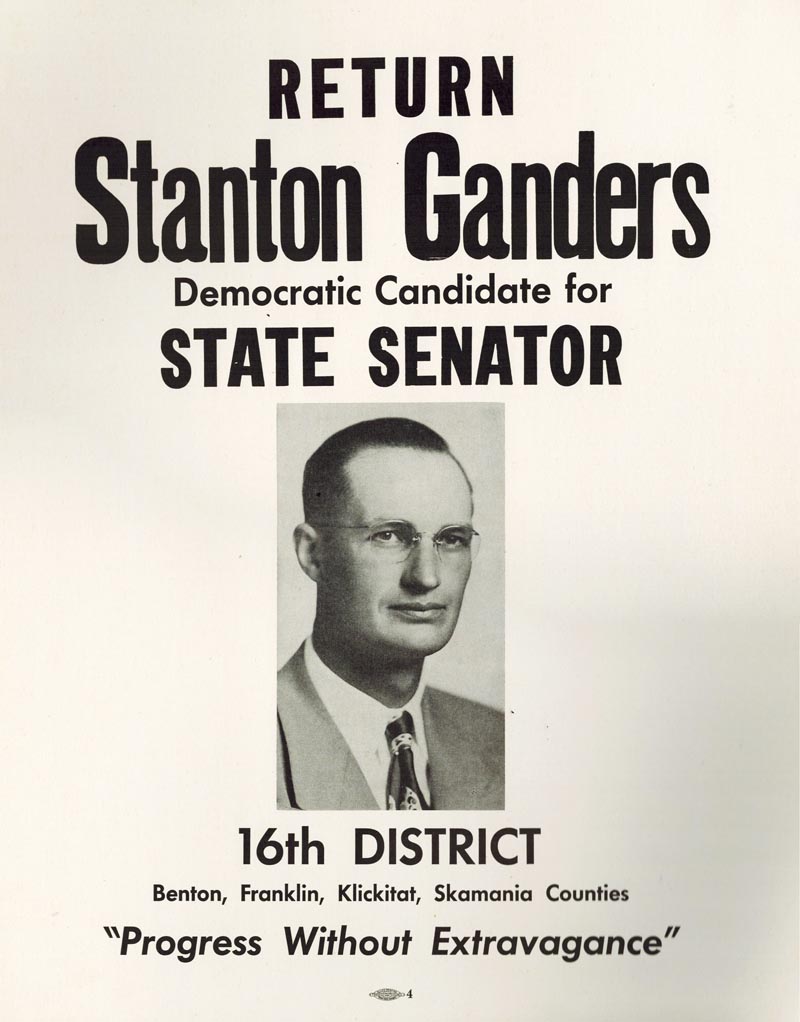 |
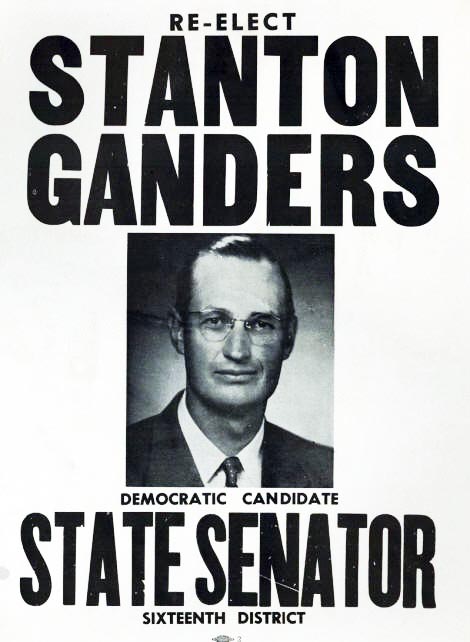 |
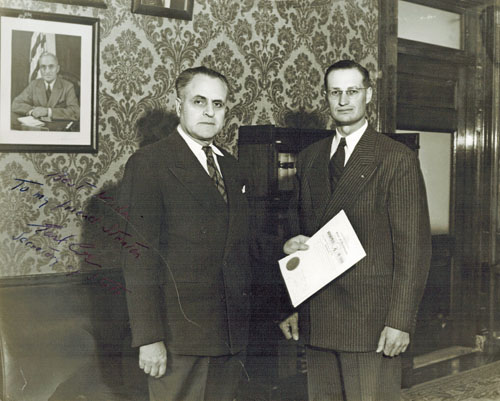
State Sen. Stanton Ganders, D-Bickleton, with
Washington Secretary of State Earl Coe
Coe was the previous senator from Ganders'
16th Legislative District: Skamania, Klickitat,
Benton and Franklin counties.
Note the photo on the wall of President Harry S.
Truman
Circa 1949
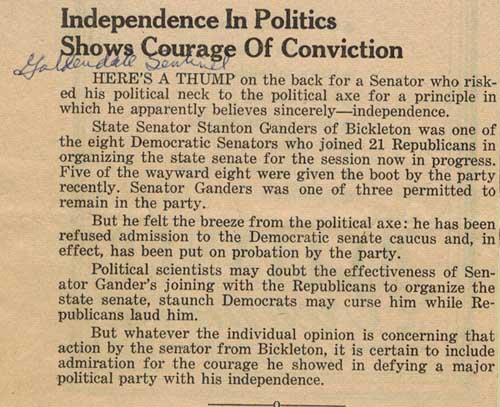
Goldendale Sentinel Editorial
|
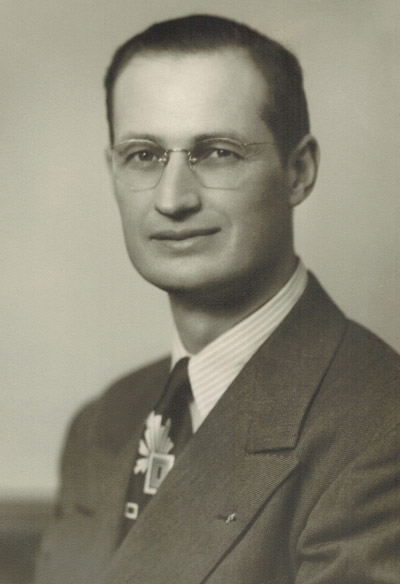
State Sen.
Stanton Ganders, 1949
Vibert Jeffers Photography, Olympia
|
Sen.
Ganders and the Blue Bridge


Numerous press accounts,
including the banner story
above in the Tri-City
Herald, talked about a
difficult effort led by
Senate Roads and Bridges
Chair Stanton Ganders to
successfully pass a $65 million Highway
Bond bill through the state
Senate on March 8, 1951
(Senate Bill No. 156.)
It was a
critical vote for a plan by Ganders and
House Roads and Bridges Chair Julia Butler
Hansen that may be regarded as the first
comprehensive bonded transportation budget in the state of
Washington.
Washington Territory allowed no
public debt at all in its
"Organic Act of 1853."
At
statehood, the constitution
capped its debt at $400,000
unless “to repel invasion,
suppress insurrection, or to
defend the state in war.”
An
exception was a tobacco
excise tax in 1949, a
measure that funded
veterans bonuses.
In 1951,
Washington continued a "pay
as you go" policy and had
not done any extensive
bonding for transportation
or other capital
construction projects. |
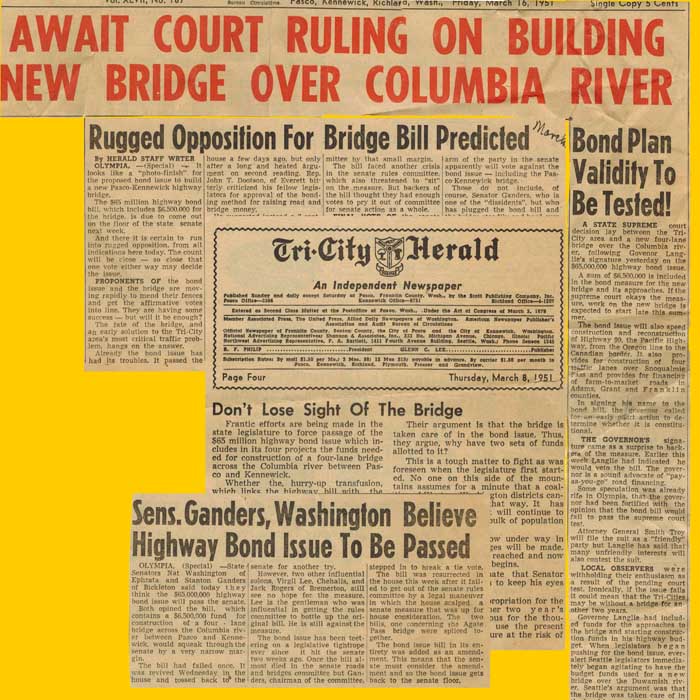 |
The 1951
bond proposal titled "First
Priority Highway Projects"
was controversial and
attracted opposition from
many Republicans and some
Democrats. It grew out
of a two-year study headed
by Hansen and 11 others,
including Ganders. The $65 million
measure resulted. The
package included $6.5
million for the
Pasco-Kennewick "Blue
Bridge," Ganders' top
legislative priority. It
also included funding for
projects he strongly
supported such as
reconstruction of Highway 99
through Western Washington
(Primary State Highway No.
1),
which eventually became
Interstate 5; expanding
Snoqualmie Pass to four
lanes, and "farm to market
roads" for a half
million acres in new farms
being developed as
irrigation was coming online
in the Columbia Basin
Project from Grand Coulee
Dam. A friendly parliamentary
maneuver by the
Democratically-controlled
House to tie the issue to
removing tolls on the Agate
Pass Bridge set up the Senate
floor vote in the
Republican-controlled Senate
and the measure passed
27-17.
(RCW 47.10.010 through RCW
47.10.140.)
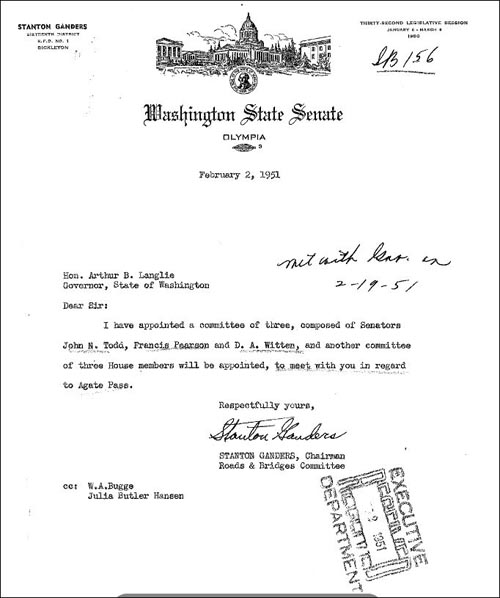
Letter from Sen. Ganders to Gov.Langlie; February 1951,
appointing Senate
members of the study
committee.
(From the governor's papers,
State Archives |
It was perhaps
Ganders' most
significant
political victory of
his career. It was a
path to adoption
that defied the
usual civics lesson
on how a bill
becomes law:
It
began with Ganders'
defection from
fellow Democrats to
give Republicans
leadership control
of the state Senate.
That was a difficult
decision for Ganders
who always
considered himself a
"life-long Democrat"
and worked very
closely with House
Democrats.
Republican
leadership named
Ganders chairman of
the Senate Roads and
Bridges Committeee
(today called the
Senate
Transportation
Committee) for his
defection but
Democratic leaders
banished him from
attending Senate
Democratic Caucus
meetings.
He
appeared to continue
to keep some
relationship and
affiliation with
Senate Democrats.
Eight Democrats
defected, Ganders
was only one of
three allowed to
remain a Senate
Democrat, according
to one press report. |
Despite his
chairmanship under GOP control, Republicans
and other defecting Democrats did not
necessarily rally to Democrat Ganders'
cause. Some of the other defecting Democrats
were opposed to the roads proposal. As
chairman, Ganders cast the deciding
vote to get the bill out of his own
committee with the support of
"regular" Democrats who had not
defected. The Senate Repuublican Floor
Leader Virgil Lee of Chehalis led the fight
against the bond issue in the Senate.
He called the measure "pork barrelling" and
charged there had been a lot of trades to
get the vote.
Lee and other opponents seemed
to have the measure killed in the Senate,
bottled up in the Senate Rules Committee,
which must assign bills to
the floor for a vote. The
House decision to tie the
measure to the Agate bridge
issue forced the
late-session vote on the
Senate floor and its 27-17
adoption. Even after this critical Senate vote, the
measure still faced a potential threat from
another Republican, Governor Arthur B.
Langlie. He seriously considered vetoing
the measure. Some members of the press
speculated Langlie decided to
sign the bill March 15 with some reluctance, knowing
it faced a constitutionality challenge in
the Washington State Supreme Court. "The
governor's signature came as a
surprise to backers of the measure.
Earlier this week Langlie had
indicated he would veto the bill,"
reported the Tri-City Herald on
March 16, 1951.
|
|
Langlie may have been
surprised himself three
months later when the
Washington State Supreme
Court ruled on June 25, 1951
that the proposal was
constitutional because it
relied on gasoline taxes to
support highways and
therefore was not subject to
state general obligation
limitations. In the case,
Bugge v. Martin, Highway
Director Bill Bugge
successfully sued State
Treasurer Tom Martin, the
state auditor, and Langlie
to release the highway and
bridge construction funds.
|
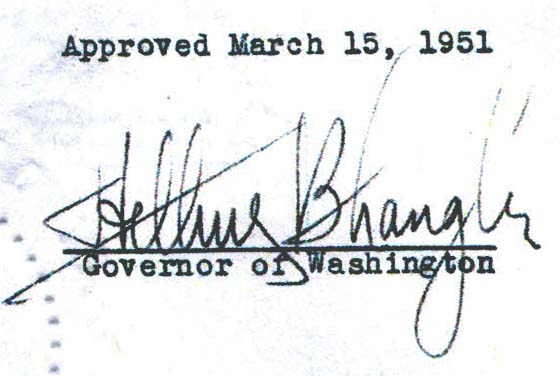 |
-- Special thanks to
Steve Excell, State
Archivist, and Guadalupe
Lopez of the Washington
Secretary of State's office
for their assistance in
providing state documents
that assisted greatly in
preparing information for
this web page.
|
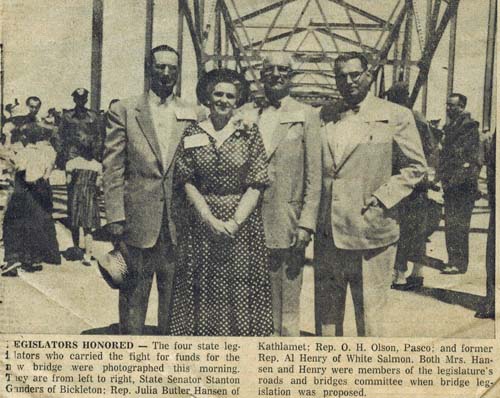
Blue Bridge
Dedication, Tri-City Herald Photo. Senate
Roads and Bridges Chair Stanton Ganders,
left, is standing next to a leading highway
bonds proponent, House Roads and Bridges
Chair Julia Butler Hansen. Also
pictured are Rep. O. H.Olson of Pasco and
former Rep.Al Henry, who later became a
state senator. This is probably a a photo
taken at the formal
dedication on July 30, 1954.
Usually referred to as the
Blue Bridge, it was
officially dedicated as the
Pioneer Memorial Bridge. In
2002, it was added to the
National Registry of
Historic Places.
|
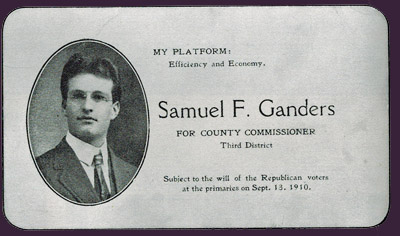 |
|
Stanton Ganders was
notorious for heated
public political
arguments with his
father, Sam Ganders,
Klickitat County
Republican Chairman.
The card above is
from Sam's 1910 GOP
campaign for county
commissioner. His
mother, Olive (Nye)
Ganders, however,
was from a
prominent Democratic family -- likely making
for many interesting family dinner table
discussions on their Bickleton farm during the days of the New Deal.
These discussions probably gave him the
basis for working both sides of the aisle
during his career. |
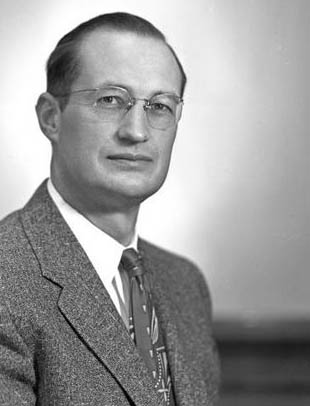
State Sen. Stanton Ganders,
1955 |
|
|
|
|
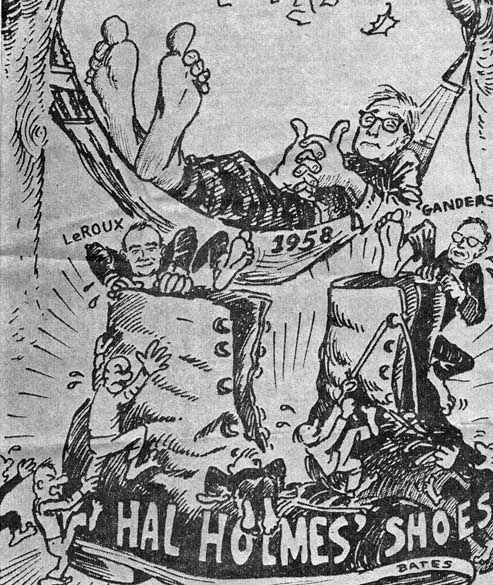 |
| This Oct. 1, 1957 Tri-Cities
newspaper editorial cartoon portrays the political scramble
for the vacant congressional shoes left with the resignation
of U.S. Rep. Hal Holmes, a Republican from Ellensburg. Note Ganders on the
right boot. Frank LeRoux, a Walla Walla Democrat, is on the
left boot. |
The Stanton Ganders
Congressional Campaign - 1958
CLICK HERE for
a printable pdf file of the
1958 Stanton Ganders Congressional Campaign Brochure |
 |
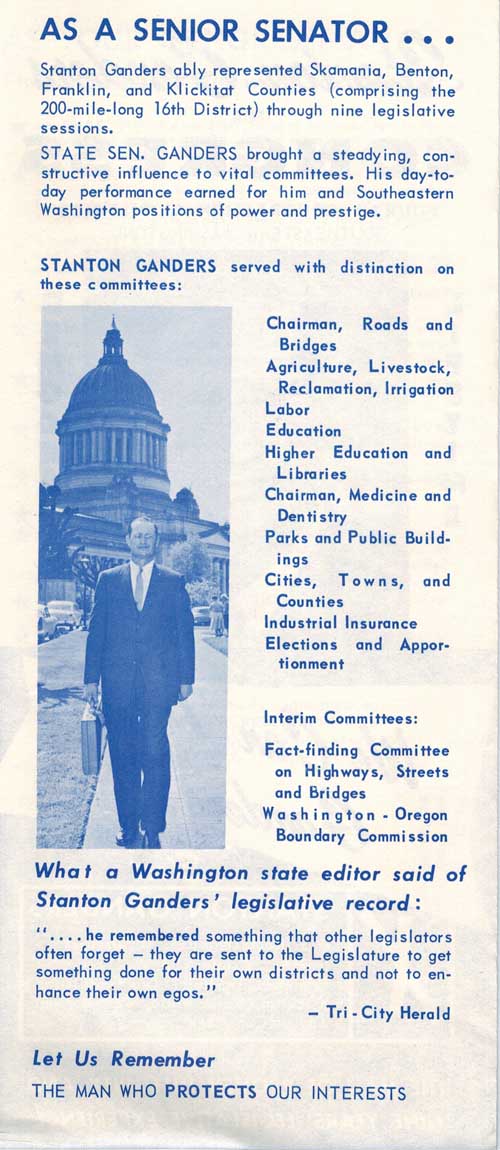 |
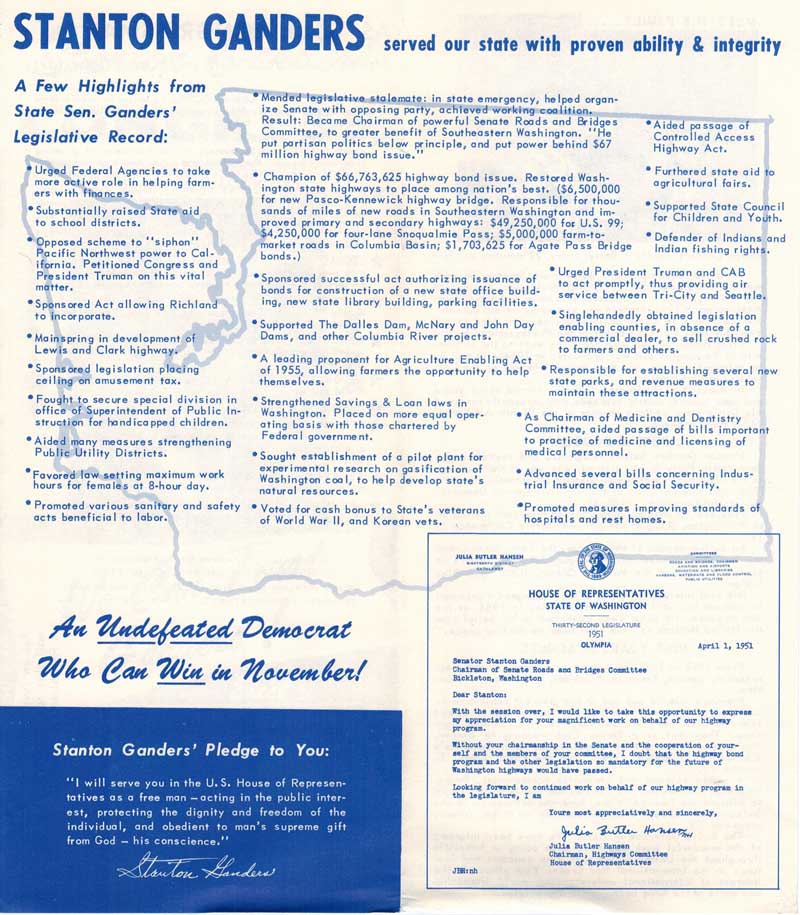 |
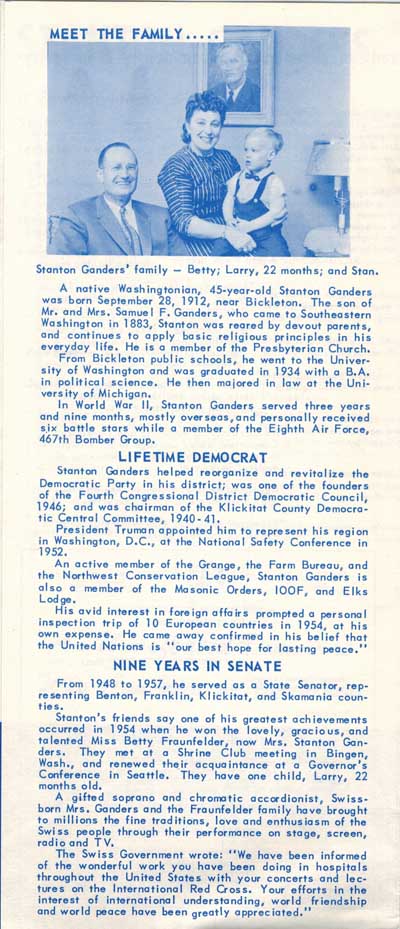 |
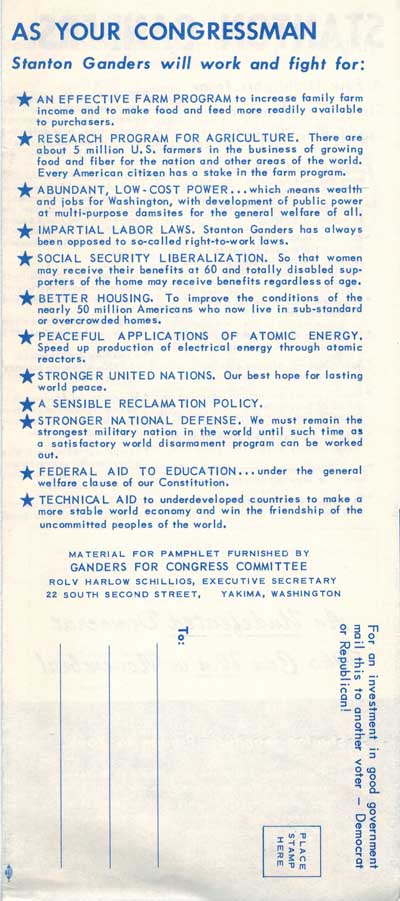 |
 |
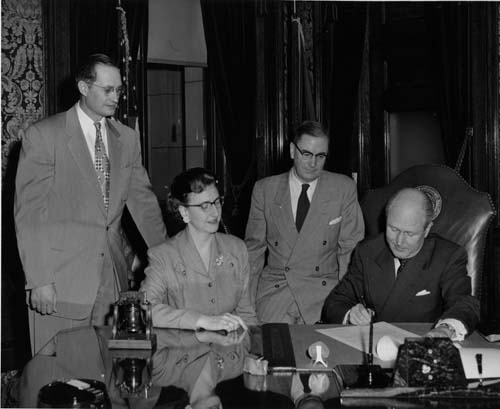 |
Signing Substitute S.B. 54. $1,250,000 for a new
State Library. March 18, 1955, 11:20 am.
Governor Langlie, Senator Carlton Sears, Senator
Stanton Ganders, State Librarian Maryan Reynolds
(Washington State Digital Archives) |
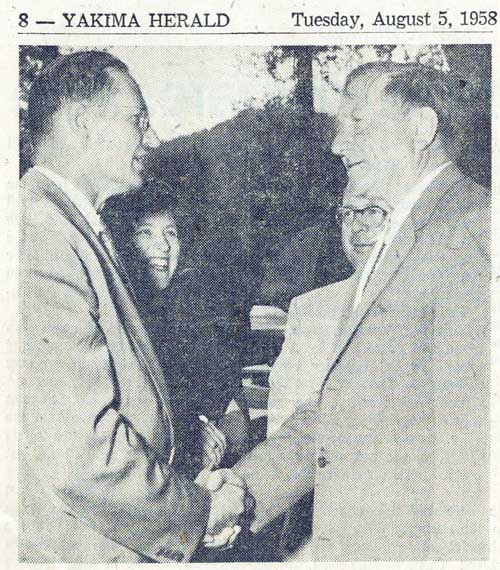
Stanton and Betty Ganders, left, participated in a tribute
to U.S. Supreme Court Justice William O. Douglas on Aug. 5,
1958 in Trout Lake, Wash. The snow-capped Mount Adams was
the backdrop for the event. Stanton Ganders, a candidate for
Congress, discussed Douglas' boyhood experiences in
Bickleton, which was also Ganders' hometown. Douglas' father
served as Presbyterian minister in Bickleton and the nearby
towns of Cleveland and Dot. Betty Ganders sang songs
which she dedicated to Douglas, his wife, and daughters,
according to the Yakima Daily Republic. The newspaper quoted
Douglas as saying, "I grew up in Yakima, and always wanted
to play the accordian, but there was always something wrong
with my fingers ... so I fell into law." |
Campaign photo of Stanton
Ganders and son Larry; Bickleton wheat farm,
Circa 1958-59 |
|
|
Ganders.Com is maintained by Larry Ganders
This page updated March 8, 2021

|
|